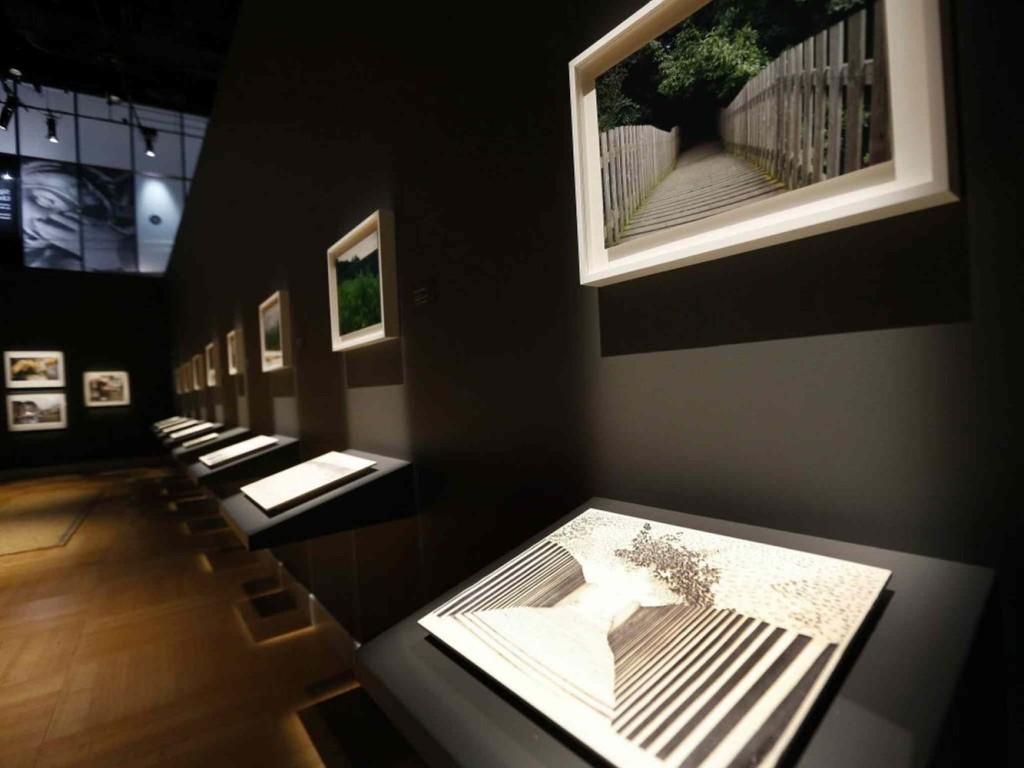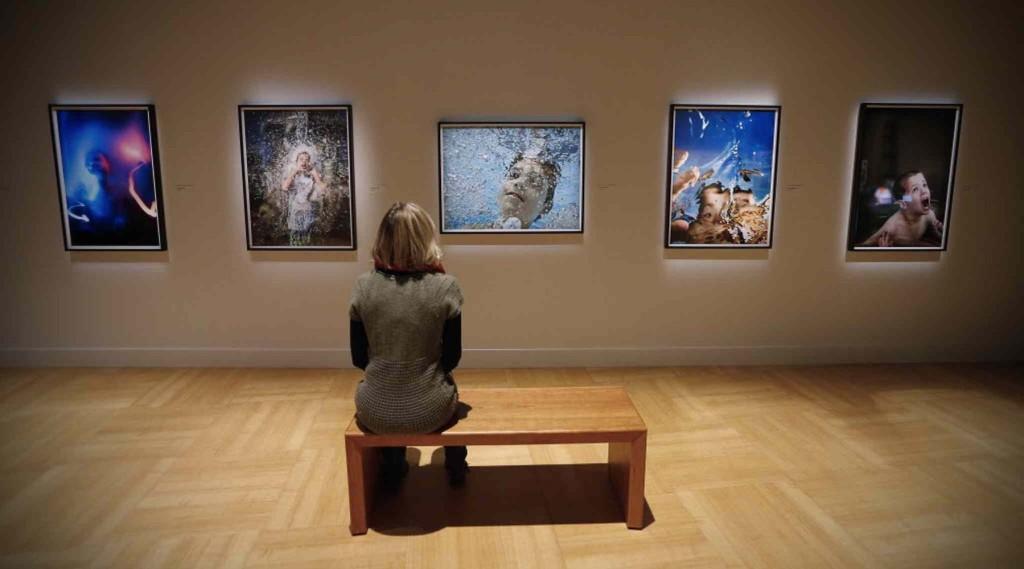 Have you ever tried to imagine what it’s like to be blind? Most of us have at one point or another made a feeble attempt, with a blindfold, or our eyes squinting shut, to see if we could grope our way around the house successfully for a good five minutes at most, with our arms out in front of us, batting around at walls and objects. That might give you a good, quick sense of being in the dark for a short time, but when you tire of the game, it’s back to expediently cooking a nice meal and cleaning up dirty dishes with ease, driving yourself wherever you’d like to go, heading to the latest moveie with friends, and doing all the things we take for granted—like getting dressed and seeing yourself in the mirror, going to work and attending classes—and tending to our favorite hobbies in what free time is left.
Have you ever tried to imagine what it’s like to be blind? Most of us have at one point or another made a feeble attempt, with a blindfold, or our eyes squinting shut, to see if we could grope our way around the house successfully for a good five minutes at most, with our arms out in front of us, batting around at walls and objects. That might give you a good, quick sense of being in the dark for a short time, but when you tire of the game, it’s back to expediently cooking a nice meal and cleaning up dirty dishes with ease, driving yourself wherever you’d like to go, heading to the latest moveie with friends, and doing all the things we take for granted—like getting dressed and seeing yourself in the mirror, going to work and attending classes—and tending to our favorite hobbies in what free time is left.
Consider just how challenging life seems on some days when your list of things to do is broad and growing, and the world is coming at you no matter what. Now imagine all of that and being visually impaired or completely blind. How does one master all the challenges of daily life without sight, and also find all the help needed to perform some of the most simplest and most difficult tasks? While there are many different physical challenges that people encounter in a lifetime, trying to navigate in a sighted world must often be a frustrating experience. And as we are busy just trying to consider how they must do the most mundane things, however, the truth is that most of the visually impaired are highly adaptive, strong people who put systems in place to lead a life with quality.
 Enjoying a creative outlet can make a huge difference in one’s life, and often feels more like a need, or even a calling. Having a physical or mental challenge often does not diminish that whatsoever, or mean that creativity must ensue only through finger painting or childlike crafts—in fact, a number of famous artists who experienced issues later in life were able to keep producing master works—they just had to adapt—from Matisse to Georgia O’Keefe.
Enjoying a creative outlet can make a huge difference in one’s life, and often feels more like a need, or even a calling. Having a physical or mental challenge often does not diminish that whatsoever, or mean that creativity must ensue only through finger painting or childlike crafts—in fact, a number of famous artists who experienced issues later in life were able to keep producing master works—they just had to adapt—from Matisse to Georgia O’Keefe.
Now, visually impaired photographers like Tara Miller and Pete Eckert have their viewers doing the adapting as they peer into another world, also represented in 3D printed form, in a new exhibition of photographs, videos and artwork called Sight Unseen: International Photography by Blind Artists. The display can be seen in Winnipeg at the Canadian Museum for Human Rights from February 20th to September 18th.
In Sight Unseen, works can be viewed and some can also be touched, allowing visitors to employ more than one sense—as well as piquing their curiosity about how some of the more complex pieces were made—thanks to John Olson’s company, 3D PhotoWorks, which ran a campaign on Kickstarter in October. A former Life magazine photographer, his works are included in the exhibit as well.
Olson’s mission, along with his company, is to go far beyond what Braille offers to the visually impaired. 3D printed photographs like the ones being exhibited in Sight Unseen allow everyone to explore more than one sense as well.
“The next frontier is to provide the blind with access to photographs and art, not words that describe them, but access to the actual images,” states Olson on his website.
Over a period of seven years, his company has been working to refine their technology which allows for artwork (drawings, collages, or photographs) to be converted to a 3D printed ‘tactile fine art print.’ This allows anyone—and most especially, the visually impaired—to experience artwork more fully with the use of their hands, allowing the blind to ‘see’ art.
“For me, being visually impaired and not seeing anything in three dimensions, it was really cool,” says Miller, a resident of Winnipeg who was a victim of congenital rubella while actually still in the womb, and consequently born with little vision. “Sometimes it was difficult for me to adjust for it, because I see everything flat — I’ve never seen anything in three dimensions.”
“I was able to feel that and put it together in my mind and feel the difference when the light meets the dark on the image. When you put it together it’s miraculous.”
 Miller, who began exploring photography while in school, became further challenged when glaucoma began to steal what little vision she did have available to her. She will be participating as a guest lecturer at the Canadian Museum on March 16, discussing her work in photography and how she’s been able to succeed within such a visual art while sight-impaired.
Miller, who began exploring photography while in school, became further challenged when glaucoma began to steal what little vision she did have available to her. She will be participating as a guest lecturer at the Canadian Museum on March 16, discussing her work in photography and how she’s been able to succeed within such a visual art while sight-impaired.
The curator for the exhibition is one Douglas McCulloh. Hailing from LA, he is fortunate to have full sight—and was able to pull the exhibition together, as well as experiencing a personal revelation in doing so in the understanding that the visually impaired bring a much more fresh and pure approach to visual arts, as they are not continually affronted with ‘visual pollution.’ He grew to appreciate the lack of influence they experience, with their ‘own internal visual space.’
McCulloh enjoys thinking of the blind as true visionaries.
“I became fascinated with the idea that there were blind photographers,” he said. “The genesis is in my own obsession with thinking about photography and thinking about sight–outward sight versus inner vision. And that’s kind of the crux of it. The idea of photography is not just seeing, but more of a mental operation than a purely visual one.”
“In truth, it’s as much philosophical as it is visual. How do you see? Do you really see? Are we seeing or are we not seeing? Are we blinded by too much sight? Eventually, it spins your head around.”
 Pete Eckert of Sacramento, another of the featured artists, lost his sight on a gradual basis just as he was entering the architectural field, and also suffering from retinitis pigmentosa. He offers an intense, multi-layered video as his contribution for the exhibition, and within it, he also discusses the disease which took his sight.
Pete Eckert of Sacramento, another of the featured artists, lost his sight on a gradual basis just as he was entering the architectural field, and also suffering from retinitis pigmentosa. He offers an intense, multi-layered video as his contribution for the exhibition, and within it, he also discusses the disease which took his sight.
“It was very traumatic. It was crushing,” Eckert says. “I walked up and down the hallway going, ‘I will not be beaten.’ And I’m not.”
In his video called Dancing on the Edge of Perception, Eckert offers a glimpse of his art with the reality of darkness offered as a way for viewers to understand what he sees and wants to share. With his visual impairment, he only sees flashes of light, and works to convey this within his artful video, which is said to border on eerie.
“I do a lot of photography in the dark and I do it this way because darkness and blindness are related,” Eckert says in the video. “It’s a simple visual metaphor to show where I am.”
He uses his other senses of sound and touch and works to bridge the gap between those who have sight and those who do not.
“He says he passes photographs under the door from the world of the blind to the world of the sighted,” McCulloh says.
“This set of people, these artists, are the most ferociously determined people you will ever meet in your life,” McCulloh says. “A number of these people essentially started photography as a statement about disability–a statement of sheer cussedness. It’s kind of fantastic, actually.”
Sight Unseen is the first display of world-class photography to be shown by the visually impaired, and also works to celebrate the 10th anniversary of the United Nations Convention on the Rights of Persons with Disabilities, coming from a museum with a team dedicated to offering a comprehensive, accessible experience for visitors of all abilities. Are you surprised by the idea of the visually impaired being photographers, as well as by the use of technology here to offer a tactile experience? Discuss this article in the Blind Photographers & 3D Printed Images forum over at 3DPB.com./
[Source: Winnipeg Free Press]Subscribe to Our Email Newsletter
Stay up-to-date on all the latest news from the 3D printing industry and receive information and offers from third party vendors.
You May Also Like
3D Printing News Briefs, April 13, 2024: Robotics, Orthotics, & Hypersonics
In 3D Printing News Briefs today, we’re focusing first on robotics, as Carnegie Mellon University’s new Robotics Innovation Center will house several community outreach programs, and Ugogo3D is now working...
Rail Giant Alstom Saves $15M with 3D Printing Automation Software 3D Spark
3D Spark has entered into a three-year deal with the rail giant Alstom. Alstom, a transport behemoth with annual revenues of $16 billion, specializes in the manufacture of trains, trams,...
Meltio Expands Global Reach with New Partnerships in the Americas and Europe
Spanish 3D printing manufacturer Meltio has expanded its sales network across the globe. With the addition of three new partners in the United States, Brazil, Argentina, and Italy, Meltio aims...
3D Printing Webinar and Event Roundup: April 7, 2024
Webinars and events in the 3D printing industry are picking back up this week! Sea-Air-Space is coming to Maryland, and SAE International is sponsoring a 3D Systems webinar about 3D...
































